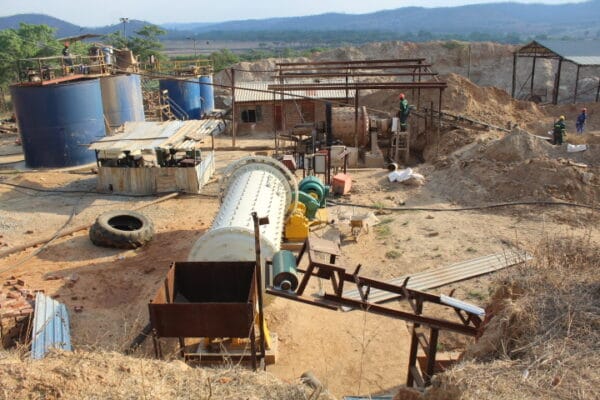For most entrepreneurs and executives in Zimbabwe the moment mining is mentioned they pay close attention. This is because the mining sector presents many opportunities especially as the businesses generate foreign currency. This article looks at factors affecting the viability of mining in Zimbabwe especially the business and financial considerations.
Factors affecting viability
There are common factors that affect most businesses in Zimbabwe but there are some which are specific to mining. In this article focus is on positive cashflows or profitability, which though related are not the same. The factors are listed below.
Affecting revenue
International metal or mineral prices
Volumes produced or capacity utilisation
Ore grade
Treatment of export proceeds. In the case of gold price paid to local miners.
Applicable exchange rates.
Affecting costs
High input costs
Depths of mines
Ore grade
Mining methods
High interest rates
Fiscal policy (transaction taxes, royalties)
Onsite administration and head office costs
Foreign currency availability to import
Depreciation or amortisation costs
Availability of foreign currency to import.
Capacity and its utilisation
Availability of working capital to fund operations
State of equipment, antiquated or new
Funds to invest in new equipment or expansion projects.
Availability of foreign currency.
The above factors are explained below.
Factors affecting revenue
Revenue, or the top line, is critical to a business and every business should strive to increase it. Factors listed above do affect the performance and viability of the mining sector.
International metal or mineral prices have a significant bearing on the revenue of local mining companies as most minerals from Zimbabwe are exported to foreign markets. Examples include gold, platinum, diamonds, chrome and nickel.
In fact most minerals but gold are exported through the Minerals Marketing Corporation of Zimbabwe (MMCZ). A slump in the international prices caused by global demand and supply factors do affect revenues. For example gold and nickel have been affected before.
Volumes of minerals that a mining house produces also affect its revenue. Volumes are affected by many factors such as the quality or grade of ore, capacity utilisation, mining methods, mining technology used and efficiencies of mining processes.
Large mining houses tend to be better mechanised compared to medium size mines or artisanal mines. Volumes are also affected by power availability hence the need for guaranteed power supplies.
Exchange control policies, which affect treatment of export proceeds or local prices paid to miners, also affect revenue.
The Reserve Bank of Zimbabwe (RBZ) exchange control regulations require that a portion of the export proceeds, currently 40 percent, be liquidated into the local currency at the ruling official exchange rate.
The balance may be retained by the miner for use, for example to meet costs including imports. For gold miners, bullion is sold to Fidelity Printers and Refiners (FPR).
The price paid by FPR and the split thereof into foreign currency and local currency has a strong bearing on mining revenue. This is why miners and the Chamber of Mines of Zimbabwe (COMZ) are always advocating favourable exchange control and pricing policies. This also includes fair or realistic exchange rates.
Factors affecting costs
Some mining businesses prefer to classify their costs into C1, C2 and C3. By definition C1 costs are Net Direct Cash Costs incurred at each stage of processing stage from mining through to the delivery of recoverable metal, less revenue from by-products. Such costs include mining costs (materials, labour, power, reagents), processing costs (milling and concentrating), transportation, onsite administration, marketing, etc.
C2 costs, or production costs, are made up of C1 plus Depreciation, Depletion and Amortisation. C3 costs, or Fully Allocated Costs, are made up of C2 plus indirect costs and interest charges.
High C1 costs will negatively affect a business. This is why a mining business has to pay attention to its mining methods, equipment, human skills, operating procedures, efficiencies, cost effective procurement, cost effective administration and marketing, amongst other issues.
Low quality ore grade increases the cost of production per unit such as ounce, kg or tonne. Some mines blend low and high grade ore to manage their unit costs.
The depth of mines seriously affect the cost of mining and movement of the ore for processing. Generally the deeper the mine the higher the cost of mining.
Depreciation of plant and machinery and amortisation, though considered sunk and non-monetary costs add to costs and therefore affect profitability.
Cashflow would have been affected at the time of payment. On the other hand fiscal factors in the form of the 2 percent intermediate money transfer tax (IMTT) on payments and non-deductible royalties, add to the cost of doing mining business.
High interest charges, especially during inflationary times, increase costs and erode liquidity and profitability. Mines should always monitor their finance costs.
Low inflation and stability of the local currency go a long way in bringing about viability. This is why businesses generally including the mining sector continuously and constructively appeal to Government and the RBZ for sustainable economic and monetary policies to assist businesses.
Monitoring profitability margins
In mining it is usually advisable to regularly monitor the M1 Margin (Revenue – C1 costs), M2 Margin (Revenue – C2 Costs) and M3 Margin (Revenue – C3 costs).
Capacity and capacity utilisation
Capacity is increased through expansionary investment. Funding may come from operations, shareholders, long term borrowings, etc. Increased capacity utilisation may be a result of more working capital or high demand for produced minerals.
Disclaimer
This simplified article is for general information purposes only and does not constitute the writer’s professional advice.
Godknows Hofisi, LLB(UNISA), B Acc(UZ), CA(Z), MBA(EBS,UK) is a legal practitioner / conveyancer with a local law firm, chartered accountant, insolvency practitioner, registered tax accountant, consultant in deal structuring, business management and tax and is an experienced director including as chairperson. He writes in his personal capacity. He can be contacted on +263 772 246 900 or [email protected].





